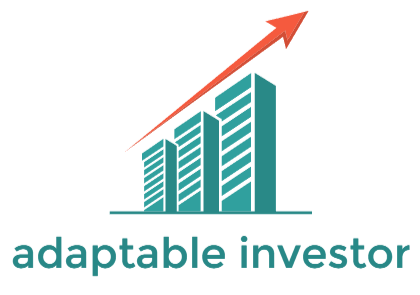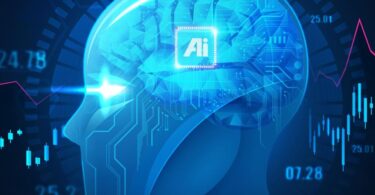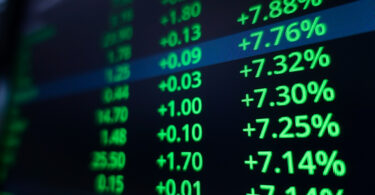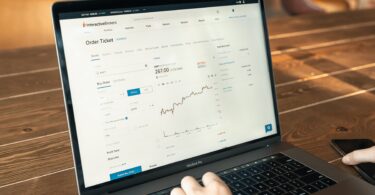Get Your Money Out of U.S. Banks Immediately
Sponsored
A Wall Street legend has warned 8.4 million Americans to prepare immediately.
“A historic financial reset in 2023 could cause a run on the banks unlike anything we've seen in our country's history,” he says.
Marc Chaikin has already appeared on 30 different TV networks to share his warning. Even CNBC's Jim Cramer has taken notice.
But few people realize this could actually happen on U.S. soil. Or what a sizable impact it could have on your wealth, especially if you have large amounts of cash in the bank right now.
Chaikin is best known for predicting the COVID-19 crash, the 2022 sell-off, and the overnight collapse of Priceline during a CNBC debate. In his 50-year Wall Street career, he worked with hedge funds run by billionaires Paul Tudor Jones and George Soros.
But today, he is now urging you to move your money out of cash and popular stocks and into a new vehicle 50 years in the making.
“This is by far the best way to protect and grow your money in what will surely be a very difficult transition for most people,” Chaikin says.
Click here for the full story, and his free recommendation.
The Federal Reserve made the decision not to proceed with an 11th consecutive interest rate hike in order to evaluate the impacts of the previous 10 hikes.
However, the Federal Open Market Committee (FOMC) projected that two more quarter percentage point increases are likely to occur before the end of the year…
During a news conference following the central bank decision, Fed Chair Jerome Powell stated, “We have raised our policy interest rate by five percentage points, and we've continued to reduce our security holdings at a brisk pace. We've covered a lot of ground, and the full effects of our tightening have yet to be felt.”
The announcement of potential future rate hikes put pressure on stocks, leading to a 300-point drop in the Dow Jones Industrial Average. The central bankers, following a two-day meeting, decided to monitor the impacts of their policy moves for another six weeks as they grapple with inflation concerns that have displayed promising but uneven signs. As a result, the Fed's key borrowing rate remained within a target range of 5%-5.25%.
Related: A 10,000% Dividend?!?
The post-meeting statement explained that maintaining the target range at this meeting allows the Committee to assess additional information and its implications for monetary policy. The next Fed meeting is scheduled for July 25-26. Market expectations were already leaning towards the Fed skipping this meeting, as officials preferred to use the term “skip” rather than “pause,” which implies a longer-term plan to keep rates unchanged. The anticipation for a rate increase diminished further after policymakers, including Powell and Vice Chair Philip Jefferson, hinted at the possibility of a change in approach.
The surprising aspect of the decision emerged from the “dot plot,” where individual FOMC members indicate their rate expectations for the future. The dots moved upward, leading to a median projection of a funds rate of 5.6% by the end of 2023. Assuming quarter-point increments, this implies two additional hikes in the remaining four meetings this year.
While the FOMC members unanimously approved the decision at Wednesday's meeting, significant disagreement persisted among the members. Two members expressed no expectations of rate hikes this year, four predicted one increase, and nine members, or half the committee, anticipated two. Two more members suggested a third hike, while one member projected four more hikes, based on quarter-point increments.
Moreover, members adjusted their forecasts for future years, expecting a fed funds rate of 4.6% in 2024 and 3.4% in 2025. These projections increased from the March update of the Summary of Economic Projections, which previously forecasted rates of 4.3% and 3.1% respectively.
The forecasts for subsequent years in GDP growth, unemployment, and inflation remained relatively unchanged, with a long-run expectation for the fed funds rate remaining at 2.5%.
The adjustments to the rate outlook occurred as members raised their expectations for economic growth in 2023, now anticipating a 1% gain in GDP compared to the previous estimate of 0.4% in March. Officials also displayed increased optimism regarding unemployment, projecting a year-end rate of 4.1% instead of the 4.5% predicted in March.
Regarding inflation, the collective projection for core inflation (excluding food and energy) increased to 3.9%, while the projection for headline inflation slightly decreased to 3.2%. The previous numbers for the personal consumption expenditures price index, the preferred inflation gauge for the central bank, were 3.6% for core inflation and 3.3% for headline inflation. The outlook for subsequent years in GDP, unemployment, and inflation saw minimal changes.
Fed officials acknowledge that policy changes have “long and variable lags,” meaning that it takes time for rate hikes to impact the economy. The Fed began raising rates in March 2022, approximately a year after inflation began its significant rise to its highest level in over four decades. These rate hikes have resulted in a 5 percentage point increase on the Fed's benchmark rate, reaching a level not seen since 2007.
The rate increases have caused 30-year mortgage rates to surpass 7% and have elevated borrowing costs for consumer items such as auto loans and credit cards.
While recent data, including the consumer and producer price indexes, have shown a slowdown in the rate of inflation, consumers still face high costs for many goods. The FOMC statement continued to emphasize that “inflation remains elevated.”
The inflation experienced in the U.S. economy stems from various factors related to the Covid-19 pandemic, such as disrupted supply chains, a surge in demand for high-priced goods over services, and substantial stimulus from Congress and the Fed, resulting in excess money chasing limited goods.
Simultaneously, labor market imbalances in supply and demand have pushed both wages and prices higher. The Fed aims to address this situation through policy tightening, which includes rate increases and a reduction of over half a trillion dollars from its balance sheet.
Protect Yourself from Biden's Dollar Destruction…
Sponsored
Take a look at this:

What I'm holding in my hand is a completely new form of money…
As we speak, it's being used as an alternative currency across the U.S. minting in places like Utah, New Hampshire and Nevada…
And since it's made out of a thinly printed sheet of REAL gold…
It may be the single best way to protect your wealth from a sinister plot by president Biden to completely DESTROY your money.
Because rest assured…
Biden has already set the stage for a government-controlled digital dollar – which I believe is a DIRECT threat to your wealth and financial security.
That's why I'm sounding the alarm about this important new form of money called a “Goldback”…
And why I want to get your hands on it right away.
There's just one catch.
Since I have a limited number of these…
I need you to respond to this message immediately.
If you don't, you may miss out on this opportunity forever.
I've recorded a short 2 minute message that explains everything here.
Including what this new money is, why it's so important that you have some, and how to claim yours right away.






